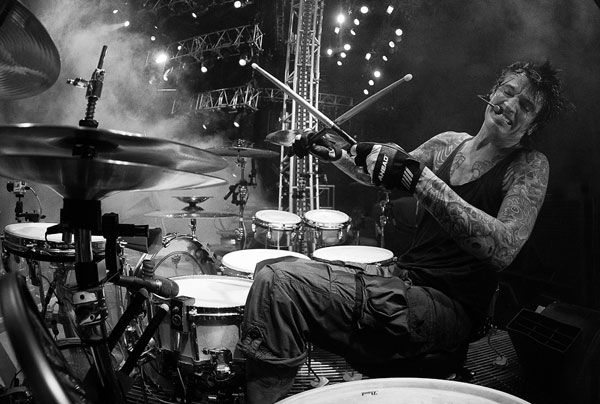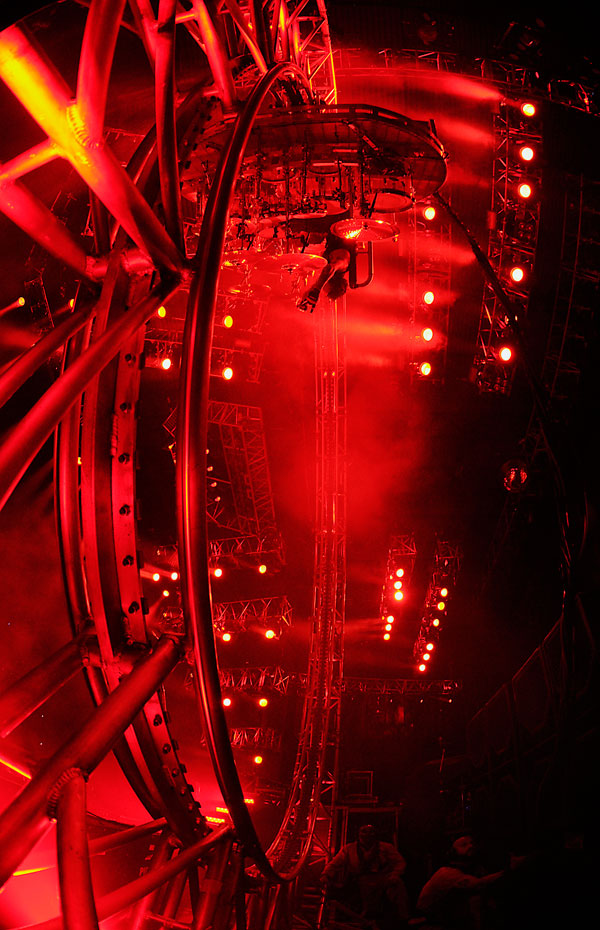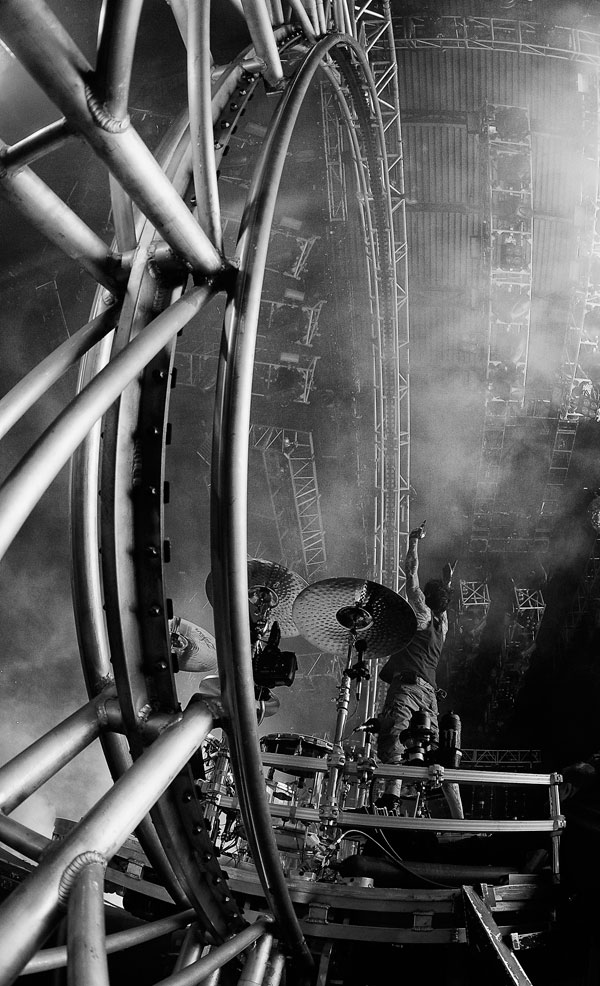Photographing Motley Crue’s Tommy Lee playing upside down on a rotating drum kit
posted Tuesday, April 2, 2013 at 1:34 PM EST
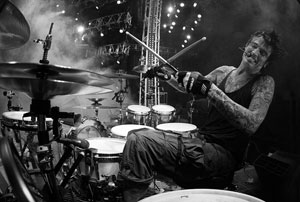
In concert photography, drummers are notoriously difficult to capture because they're usually positioned at the back of the stage behind an obstructive drum kit. But what if the drummer you wanted to photograph also had a custom-made rig that allowed him to play upside down? Sounds like a tough challenge, right?
That's the set-up Mike Corrado faced when he went to photograph Mötley Crüe at Jones Beach on Long Island, NY last September. The Crüe's drummer, Tommy Lee, has a rather infamous "roller coaster" drum kit rigged to a circular track that allows him to play completely upside down at one point during the show. So, along with trying to get close-ups of Lee, Corrado had to figure out how to get a difficult shot from a killer angle showing the drummer playing upside down before the live crowd.
For the close-up aspect of the challenge, Corrado was able to place remote cameras directly onto Lee's drum kit. (Getting this incredible access was, no doubt, helped by the fact that Corrado is a Product Manager for Nikon, and Nikon is the flagship sponsor of the Jones Beach concert series.)
For the remote shooting on the drum kit, Corrado attached a trio of Nikon D3S digital SLRs fitted with AF Fisheye-NIKKOR 16mm f/2.8D lenses to Lee's drum kit, which were fired by PocketWizard remotes.
"Two cameras would be on the drum platform and would go with him on the ride, with one aimed to capture clean, cool images, essentially portrait shots, and the other secured to the bottom of the drum kit, aimed up to show how big the wheel was and to get a picture of Tommy upside down," he writes on Nikon USA's website. "The third camera would be on the wheel itself. I’d be shooting from the front of the house, at the soundboard, with a fourth camera, a D4 with an AF-S NIKKOR 200-400mm f/4G ED VR II and an AF-S Teleconverter TC-14E II."
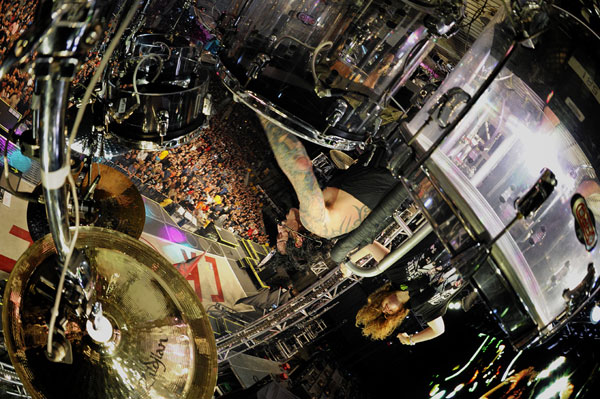
The remote cameras were all set to ISO 3200, f/8, aperture priority, center-weighted metering at -2/3 stop exposure compensation to prevent blowing out the images. Nikon senior technical manager Steve Heiner helped with firing the remotes while Corrado captured images with the D4 from the soundboard.
"The moment I started breathing normally was at the end of the performance when Steve and I pulled the cameras off the rig, pushed the playback buttons and saw that everything had worked the way it was supposed to. We had pictures, 11,000 of them, and the edit revealed that 90 percent were acceptable and many were downright terrific."
Read more about the shoot and see more images at Nikon USA's website.
(All images used with permission by the photographer.)
